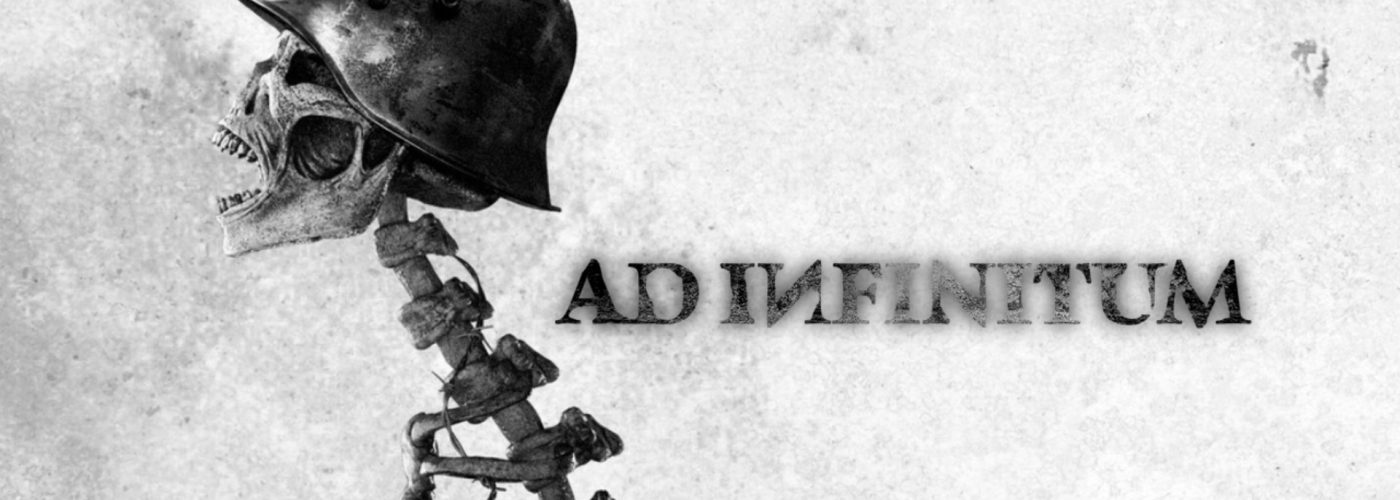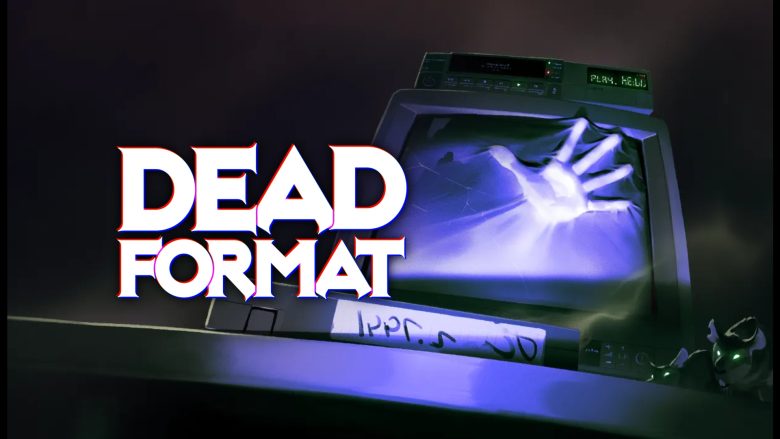All the Way to Infinity.
Ad Infinitum is a chilling survival horror game that blends exploration, psychological depth, and unsettling environments, drawing players into a profoundly immersive sensory experience.
Set against the backdrop of World War I, the game stands out from standard horror fare by blending historical authenticity with a pervasive sense of fear, paranoia, and mental disorientation.
At its core, Ad Infinitum fuses historical realism with surreal horror: trenches, ravaged battlefields, and crumbling villages become stages for inexplicable and eerie occurrences, where the horrors of war act as both metaphor and amplifier of psychological terror, framing the tragic story of a family emotionally torn apart by conflict.
The player’s main goal is survival – navigating hostile landscapes, scavenging essential resources, solving intricate puzzles, and confronting supernatural entities or manifestations.
The narrative goes beyond mere storytelling; it immerses the player in the protagonist’s psyche, making subjective perception central to the experience. This psychological tension ensures that every step through the environment carries potential danger, and every interaction brims with suspense.
Ad Infinitum also stands out for its visual and auditory approach: the game doesn’t merely aim to frighten, but to create an oppressive and anxiety-inducing atmosphere. This careful attention to sensory detail sustains constant tension and deep immersion, making the game not just a test of reflexes, but an intense emotional experience.
Equally striking is the seamless integration of survival horror mechanics with the historical context: the World War I setting is far from a simple backdrop, actively shaping the gameplay. Trenches, front lines, and ruined buildings serve as pathways, hiding spots, and exploration opportunities, creating a coherent and realistic map where narrative and gameplay are intricately intertwined.
This seamless integration of story, environment, and gameplay establishes Ad Infinitum as a remarkable example of how survival horror can transcend genre conventions, delivering an experience rich in tension, reflection, and immersive sensory engagement.
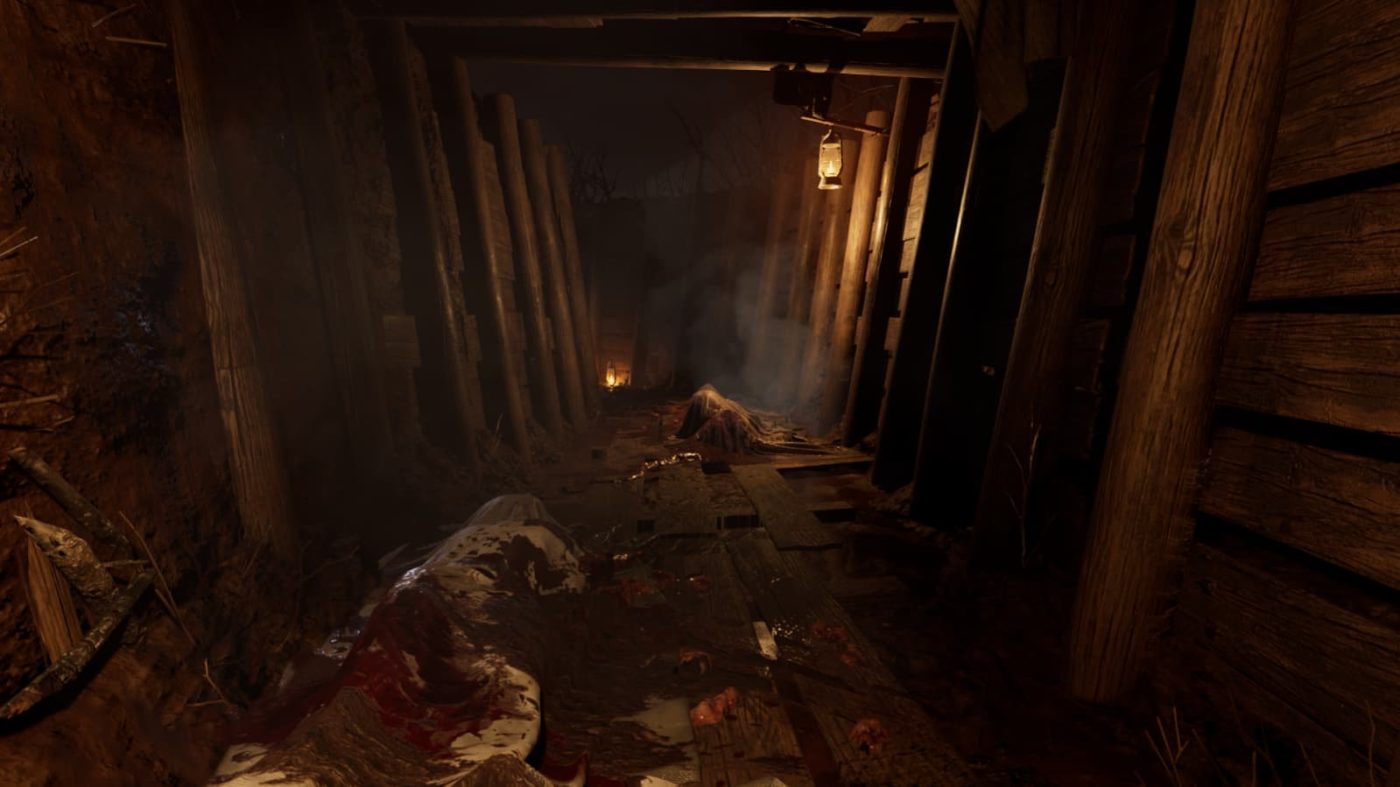

Auteur-Driven Indie
Ad Infinitum was developed by Hekate, a Berlin-based German indie studio composed of a young, passionate team dedicated to immersive, atmospheric horror experiences. The studio’s declared vision places a strong emphasis on impactful audiovisual presentation, dense atmospheres, engaging gameplay, and robust worldbuilding, giving the game a clear auteur-driven identity, built around war trauma and its psychological repercussions. This is how Hekate has sought to make its mark on the international indie scene.
Ad Infinitum is a project of long gestation: following its initial reveal years ago, the game was reintroduced in 2021, reflecting a complex development process and a vision that required time to fully mature both aesthetically and production-wise. This extended incubation allowed the team to refine two central pillars: historical accuracy (recreating World War I and domestic life of the era) and psychological metaphor (nightmares, dissociation, guilt), seamlessly merged into a dreamlike narrative loop alternating between trenches, family homes, and symbolic locations.
The game’s “comeback” was also acknowledged by industry publications and up-to-date encyclopedic sources. On the production side, Hekate made targeted strategic choices: leveraging Unreal Engine for rapid prototyping, art direction, and photorealistic asset pipelines; ensuring tight integration between level design and soundscape to reinforce psychological horror; and prioritizing localization, with full voiceovers and extensive subtitles in multiple languages to reach a global audience.
To maximize international reach, Hekate partnered with Nacon, a publisher renowned for supporting narrative-driven AA projects with strong creative identities. For Ad Infinitum, Nacon managed funding, global marketing, and distribution across PC and next-gen consoles, culminating in the release on September 14, 2023. The game’s extensive language support – including Italian, English, German, French, Spanish, Japanese, Polish, Brazilian Portuguese, Russian, Simplified and Traditional Chinese, Turkish, Korean, and Thai – further demonstrates the studio’s intent to position the title beyond the niche market while maintaining its psychological horror auteur identity.
From a market perspective, Ad Infinitum is a prime example of a highly auteur-driven indie/AA production: controlled budget, ambitious aesthetic goals, and a target audience attuned to narrative-focused horror. Partnering with a structured publisher like Nacon allowed the project to expand its reach without compromising creative control, resulting in focused, strategic decisions that have clearly paid off.
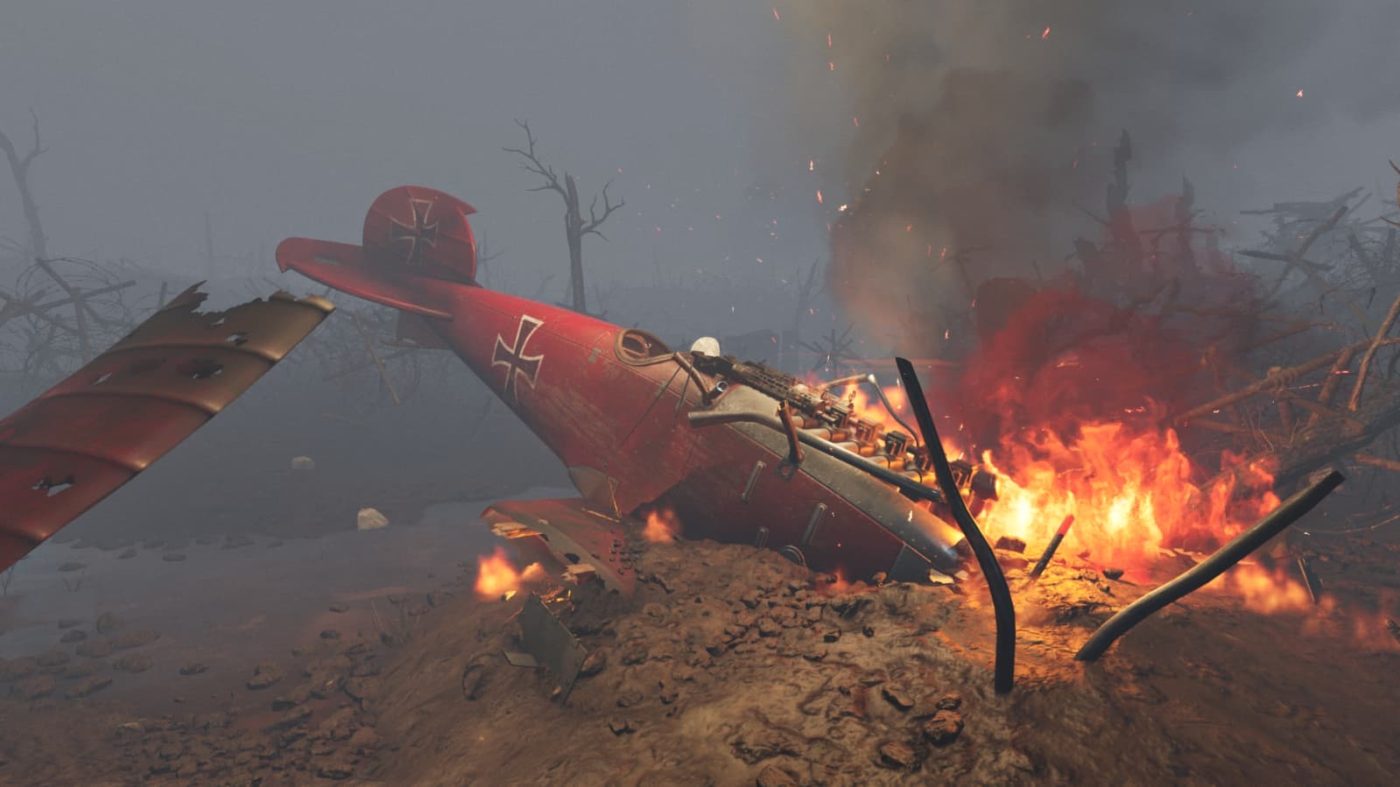
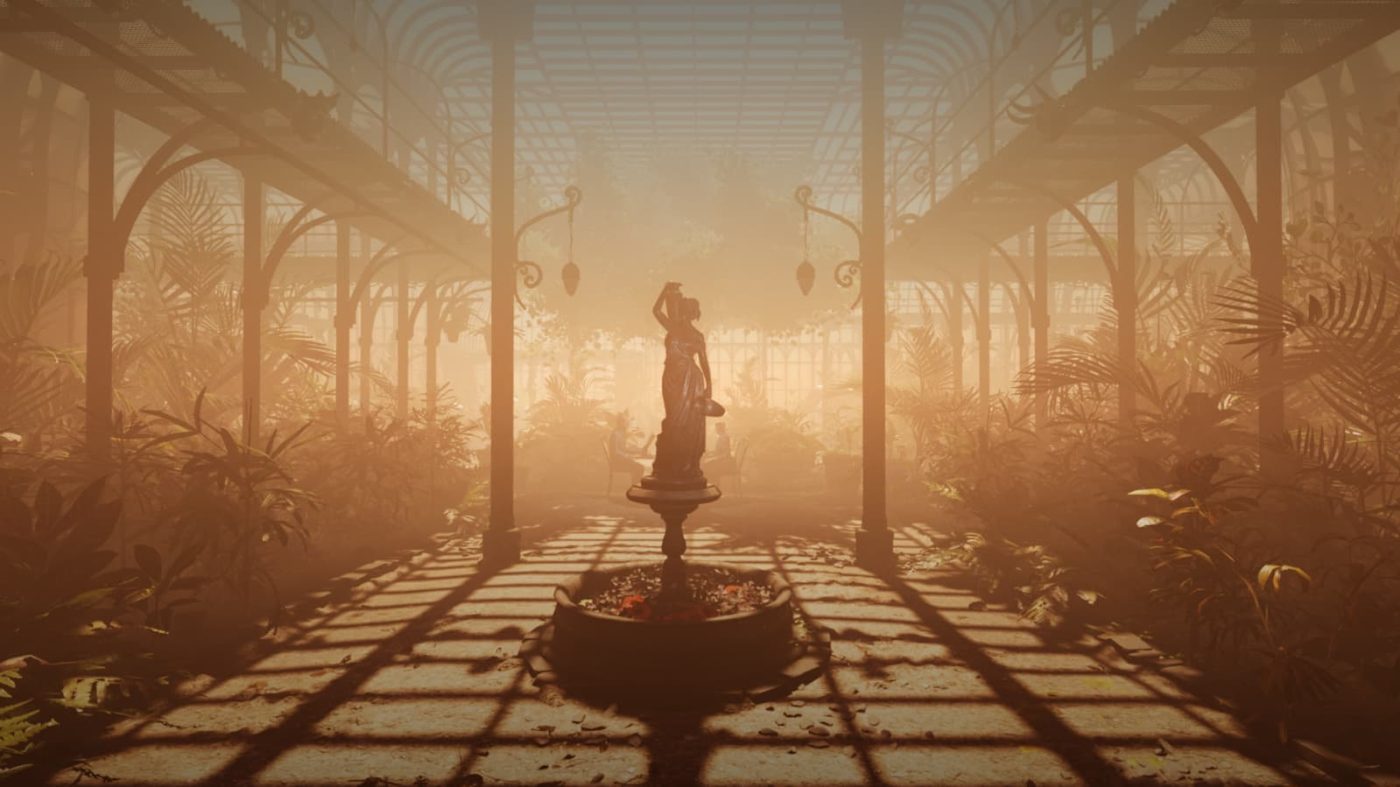
A Web of Secrets Beneath the Surface
Ad Infinitum plunges players into the harsh realities of World War I, following the story of German soldier Paul, who finds himself trapped in a psychological and surreal nightmare while struggling to survive the Western Front. The game’s narrative eschews traditional linearity, weaving together historical events, subjective perceptions, and supernatural phenomena, generating a persistent sense of disorientation and paranoia.
Paul is a man shaped and scarred by war: he has witnessed the deaths of comrades, endured the trauma of the trenches, and confronted the absurdity of a conflict without clear logic or end. The story begins in a realistic setting – muddy trenches, bombed-out villages, and ravaged battlefields – but as the player progresses, historical reality blends with unsettling symbolic events, from spectral apparitions to deformed creatures and warped space-time. This seamless interplay between reality and hallucination reflects Paul’s descent into a fractured psyche, making the experience immersive and intensely affecting.
At its core, the story revolves around survival, with a particular focus on the psychological dimension. Paul must confront not only physical enemies but also the manifestations of his traumatized mind, often represented through symbolic elements such as distorted bodies, endless trenches, or eerie sounds emerging from nowhere. War becomes both context and metaphor, with each trench, fallen soldier, and ruined structure serving as a reminder of human brutality and the fragility of the mind under extreme stress.
The game features a dual setting. Players experience Paul’s firsthand perspective of the battlefield, while also exploring his haunted family home. Paul and Joannes, the two sons of the esteemed General Von Schmitt, never returned from the war, leaving a father proud of Joannes but not of Paul, and a grieving mother who summons her lost son through a ritual. Within this second location, players traverse the house, reliving childhood memories alongside dark and terrifying moments.
Ad Infinitum employs a branching narrative structure, allowing players to make choices that influence the protagonist’s perception and, at times, immediate events. These decisions reshape the understanding of the story and heighten psychological tension. The result is a narrative that does not merely recount events but immerses players in Paul’s emotions and inner conflicts, enabling them to experience firsthand anxiety, terror, and helplessness.
A defining feature of the narrative is the interplay between historical realism and psychological horror. The game draws on accurate World War I references – including military equipment, tactics, and environments – as a foundation for a believable world, which becomes even more disturbing when layered with surreal, nightmarish elements. This fusion sustains a strong sense of immersion, as players recognize that the horrors they witness may have roots in reality, making each supernatural occurrence more credible and unsettling.
Ultimately, Ad Infinitum confronts players with loss, trauma, guilt, and the dehumanizing effects of war. Conflict is not merely a backdrop, but a catalyst intensifying the protagonist’s fear, anguish, and paranoia. Through environmental storytelling, evocative dialogue, discovered documents, and haunting visuals, the game delivers a layered, compelling narrative that rewards careful exploration and attention to detail, creating a truly immersive psychological horror experience.
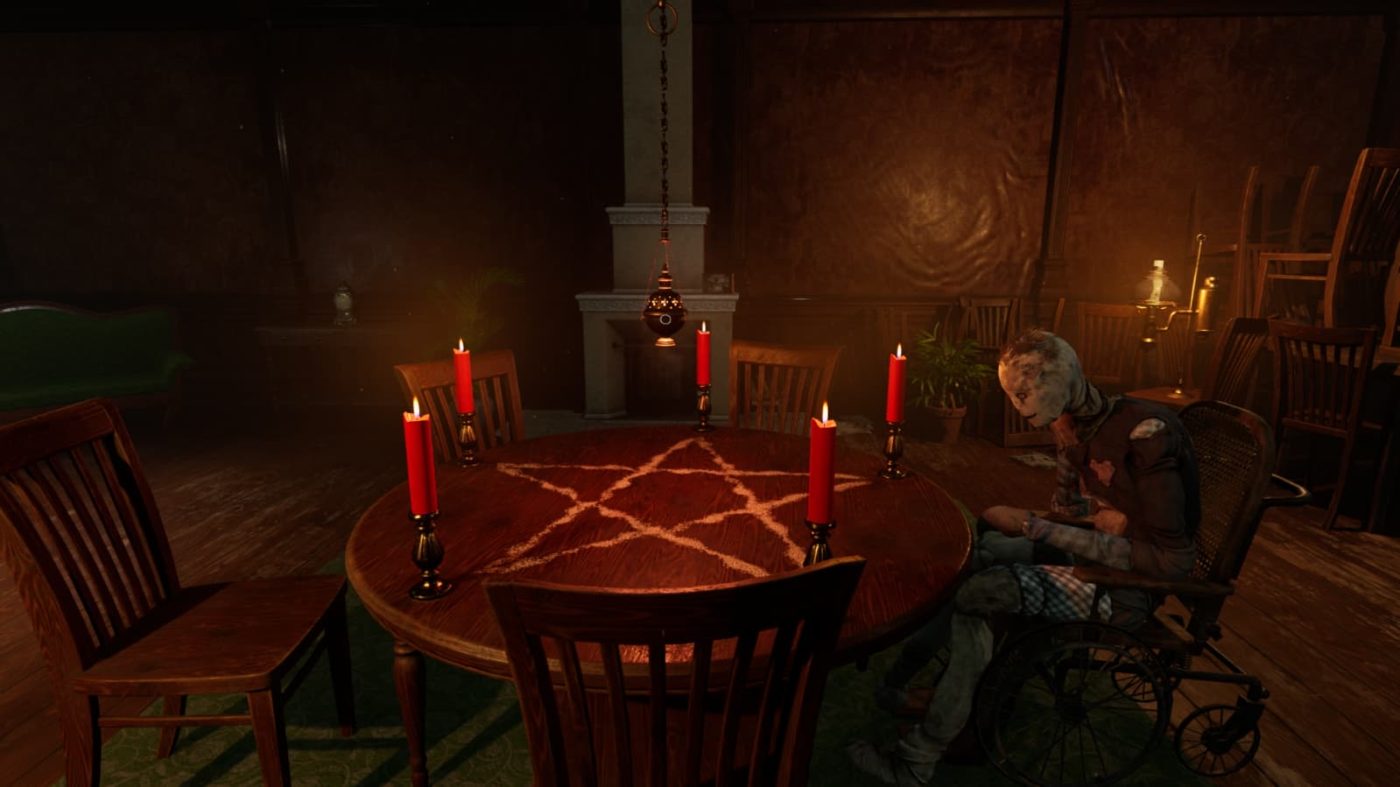

Deep and Meaningful Themes
The narrative of Ad Infinitum stands as one of its most defining pillars, driven by a psychological and profoundly immersive approach that breaks away from the well-worn conventions of survival horror.
Rather than unfolding as a simple, linear sequence of events, the game constructs a multi-layered story that probes the deepest recesses of the human mind, with World War I serving as a stark and realistic backdrop. This setting amplifies its central themes: trauma, paranoia, guilt, and dehumanization.
Through the protagonist’s eyes, the player experiences war not merely as a physical battlefield, but as an emotional and psychological crucible, one that extends its scars even into the familial realm. Surreal sequences, warped environments, and unsettling apparitions blur the boundaries between reality and hallucination, compelling the player to continually question what is real and what is born of a fractured psyche.
Foremost among its themes is trauma and mental health: the game delivers a striking portrayal of war’s psychological impact. Claustrophobic trenches, sudden noises, haunting visions, and isolation combine to form a harrowing depiction of paranoia and post-traumatic stress. Every detail – from shattered buildings to the remains of fallen soldiers – serves as a visceral reminder of the emotional toll of conflict.
Equally central is the theme of brutality and dehumanization: Ad Infinitum exposes how war corrodes morality, erodes empathy, and distorts perception. The creatures and enemies Paul faces are not mere adversaries but manifestations of the horrors he has endured, external violence made flesh within his psyche.
The game also delves deeply into guilt and responsibility, exploring the moral burden carried by soldiers entangled in uncontrollable events. Each decision shapes the character’s perception of the world and emotional state, binding the player to the protagonist’s inner turmoil. Closely tied to this is the theme of survival and isolation, which imbues the narrative with a relentless sense of loneliness and vulnerability. Limited resources, hostile landscapes, and psychological tension steadily raise the stakes, ensuring that every step feels fraught with weight.
Throughout, surrealism and symbolism serve as narrative pillars. Many events and creatures resist literal explanation, acting instead as emblems of fear, trauma, and madness. This deliberate ambiguity elevates the experience beyond conventional horror, offering a profound meditation on war and the human condition.
A key strength lies in the game’s environmental storytelling: letters, documents, objects, and subtle scenic details reveal fragments of the past, inviting players to reconstruct events without relying solely on dialogue or cutscenes. This approach heightens immersion, rewarding curiosity and keen observation.
Through this interplay of mature and weighty themes, Ad Infinitum transcends the boundaries of mere horror, delivering not only tension and dread but also emotional resonance and psychological depth – an experience that stays with the player well beyond the final credits.
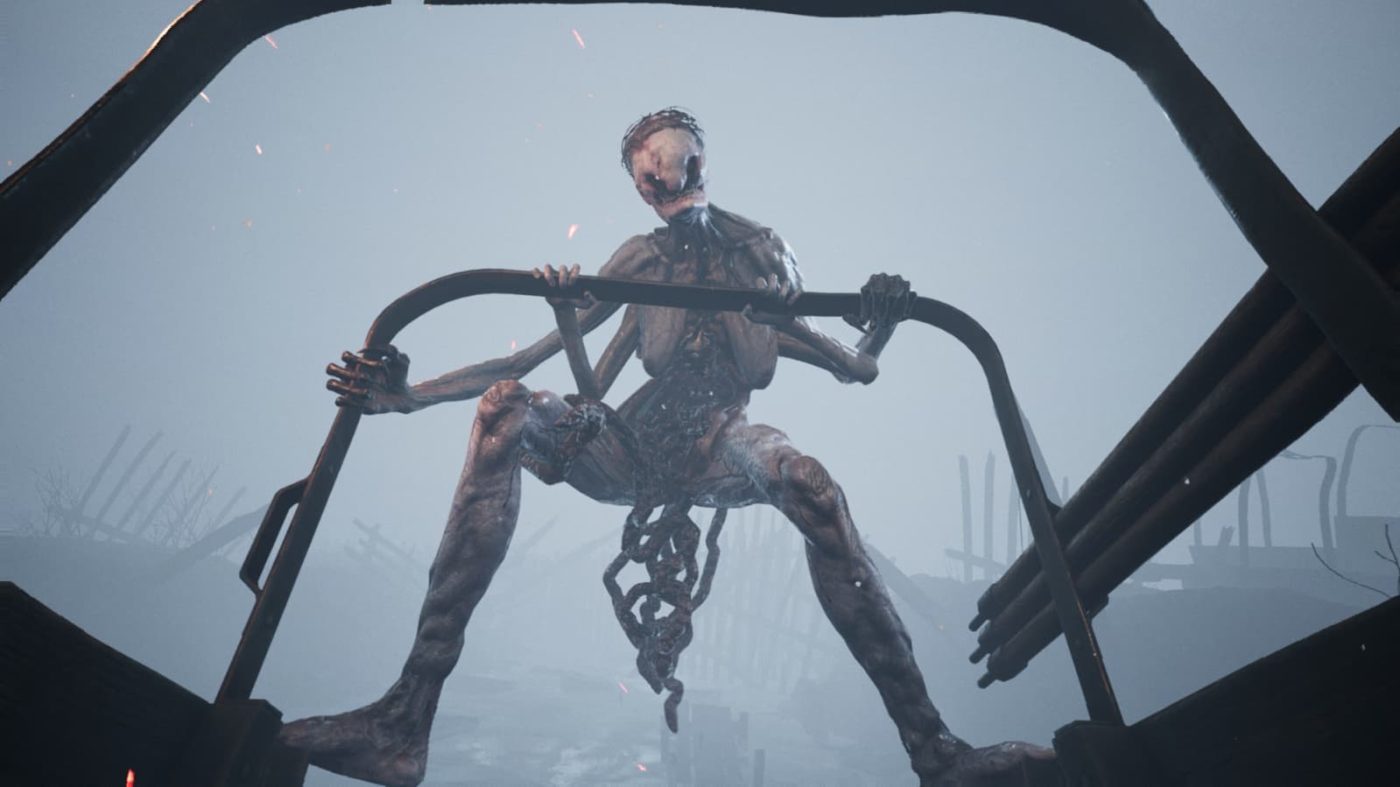
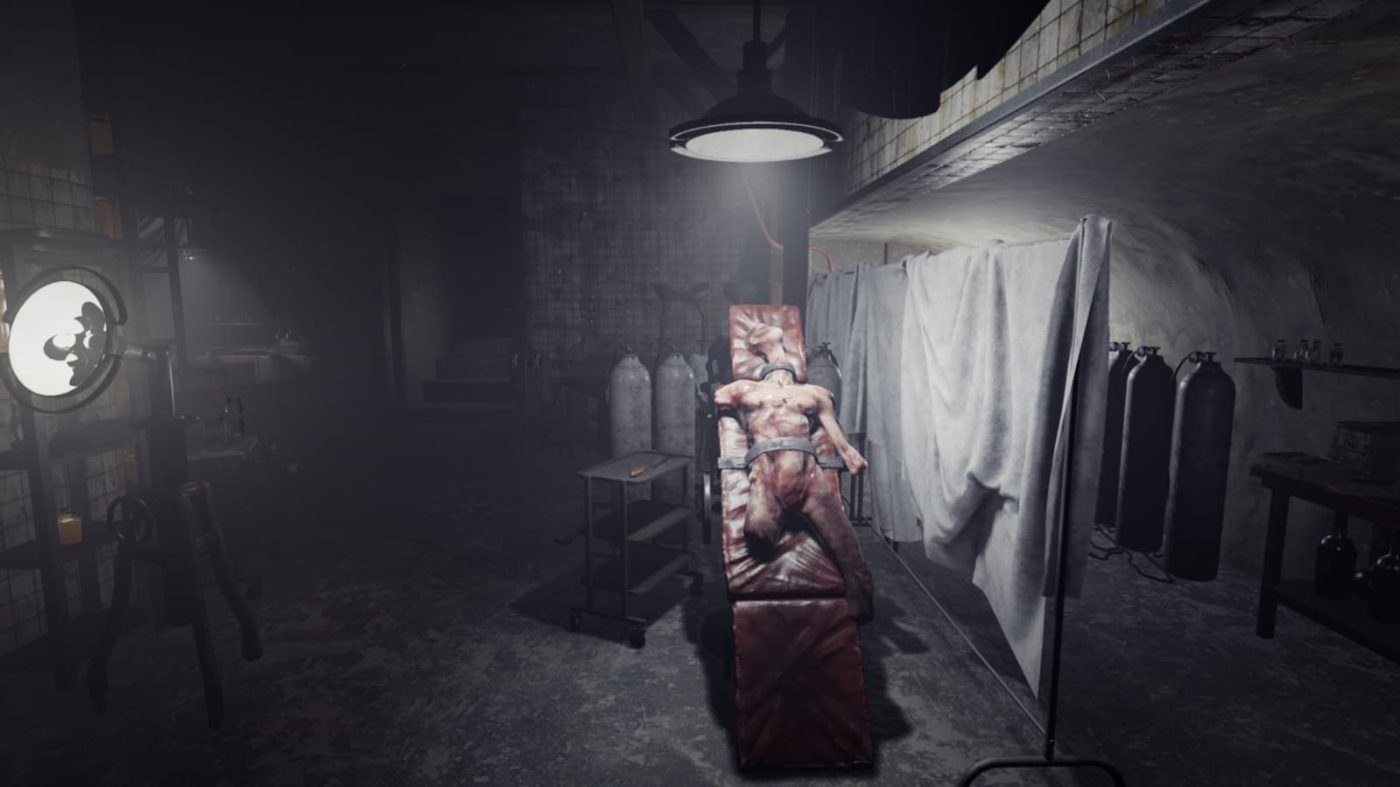
Reliable and Cohesive Technical Execution
The technical framework and art design of Ad Infinitum are among the game’s greatest strengths, playing a pivotal role in immersion and emotional intensity. Developed using Unreal Engine 4, the team was able to craft highly detailed, realistic environments, manage dynamic lighting and shadows, and implement complex visual effects, all essential to the game’s horror-surrealist atmosphere.
The art direction emphasizes strict historical realism, from trenches and bombed villages to battlefields and European rural settings of the World War I era. Every detail – from weapons and military gear to destroyed buildings and everyday objects – is meticulously recreated, conveying authenticity and total immersion. This fidelity makes the intrusion of surreal elements all the more unsettling, creating a constant tension between reality and the protagonist’s distorted perception.
Visually, the game employs dynamic and volumetric lighting, deep shadows, and atmospheric fog to evoke oppression and imminent danger. Color grading reinforces mood and emotional tone: muted, cold palettes dominate the trenches, strong light-shadow contrasts heighten suspense, and unsettling hues punctuate surreal sequences. Each artistic choice enhances the psychological impact, turning the environment into an almost living character within the story. Textures and materials are rendered with extraordinary care: the mud of the trenches, rusted weapons, and crumbling structures feel tangible and real. Advanced particle effects – smoke, dust, and debris – heighten the sense of chaos and destruction.
Regarding character and creature design, Paul, the protagonist, features fluid and realistic animation that conveys tension, fatigue, and fear. Surreal creatures and apparitions are designed to be disturbing without resorting to cheap stereotypes: deformations, unusual proportions, and unnatural movements heighten psychological distress, while stylistic consistency with the historical environment maintains a sense of suspended reality.
Environmental physics and interaction further enhance immersion. Objects respond realistically to player actions, enabling coherent interactions: creaking doors, unstable floors, and movable items become tools of survival, reinforcing the feeling of presence and engagement within the world.
In summary, the technical and artistic design of Ad Infinitum merges historical accuracy, intricate environmental detail, and advanced visual effects to deliver a hauntingly immersive experience. The engine balances visual fidelity, performance, and effect complexity, while the art direction conveys emotion, tension, and narrative depth. This synergy transforms the game into not just a compelling psychological horror, but also a prime example of how art design can amplify storytelling and emotional resonance.

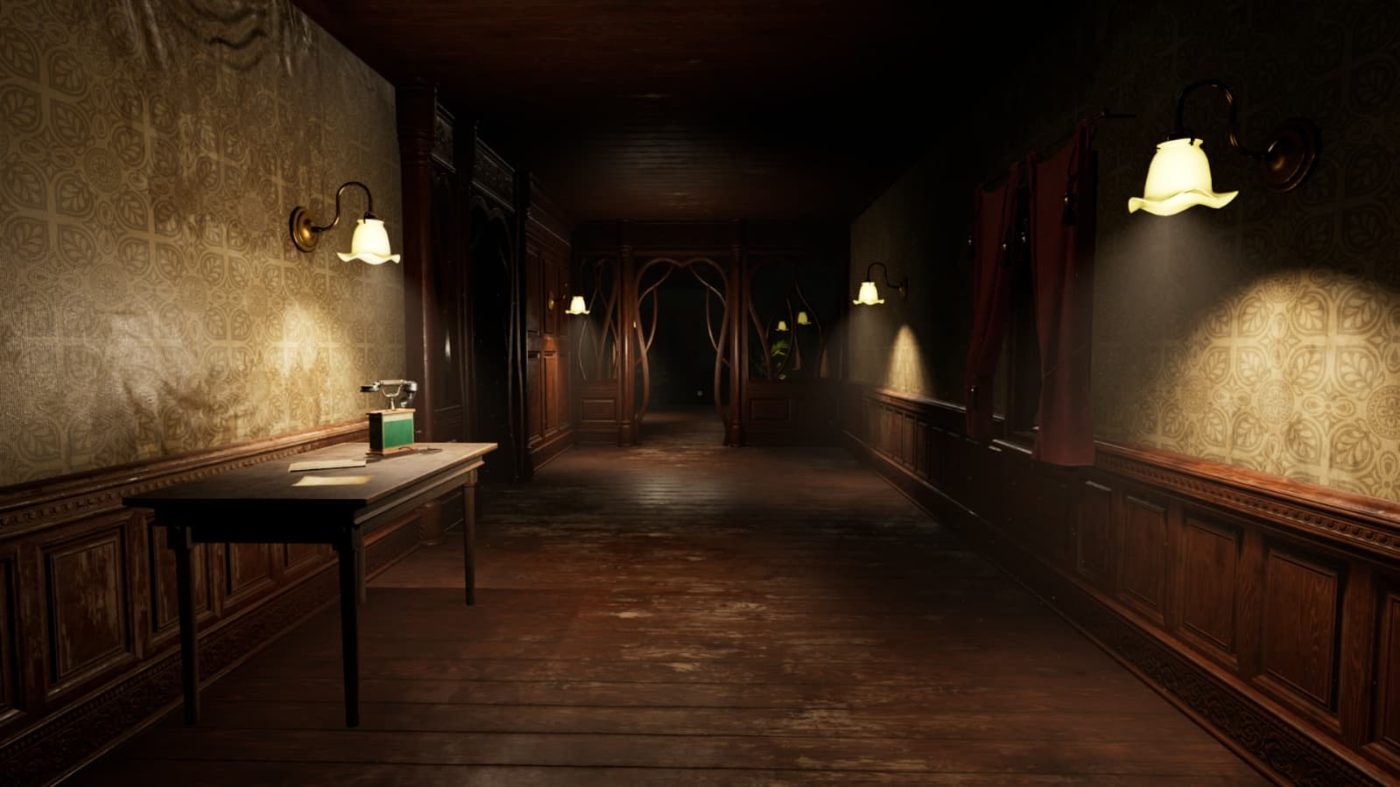


Immersive and Well-Crafted Sound
The sound design of Ad Infinitum is a cornerstone of the game’s immersive and oppressive atmosphere. While the art direction crafts the visual and historical authenticity, the audio works in perfect synergy to convey anxiety, tension, and dread, transforming every footstep, gunshot, and silence into a powerful storytelling tool.
Renowned for its realism and meticulous detail, the soundscape mirrors the historical fidelity of the environments: explosions, gunfire, distant artillery, and mortar strikes have been painstakingly recorded or recreated to authentically reflect the materials and spaces of the era. These elements do more than add credibility – they cultivate a constant sense of imminent danger.
A standout feature is the sophisticated use of 3D audio spatialization, which positions sounds with precision, enabling players to detect enemies, supernatural entities, or critical events through sound alone. The squelch of mud, the creak of a door, or an unsettling whisper can hint at unseen threats, heightening both realism and psychological tension. This advanced use of spatial audio amplifies immersion without relying on jump scares, while also reinforcing the game’s central theme: the blurred line between reality and hallucination. Distorted echoes, unnatural reverberations, and ethereal environmental effects reflect the protagonist’s descent into madness, immersing the player in Paul’s fractured perception of the world. In many moments, ambient sound almost becomes a character itself, shaping emotions and pacing the narrative.
Technically, the audio system employs advanced mixing and positioning engines compatible with Unreal Engine 4, dynamically modulating volume, direction, and frequency based on player actions and environmental conditions. Sounds respond realistically to obstacles, walls, distances, and surfaces, generating a rich sense of three-dimensional space and depth, heightening suspension of disbelief.
The game’s performance and optimization are equally impressive: despite the extensive use of complex audio effects, it maintains smooth performance across platforms, balancing sound quality and hardware demands flawlessly.
The synergy between audio, visual design, and gameplay elevates Ad Infinitum beyond conventional psychological horror, creating an experience that is not only terrifying but deeply immersive and emotionally resonant.



Gameplay-Integrated Worldbuilding
The worldbuilding in Ad Infinitum is one of the game’s greatest strengths, blending meticulous historical realism with a horror-surrealist vision to create a coherent, immersive, and psychologically oppressive environment.
The game transports players to World War I, yet it extends beyond a purely historical depiction: the conflict becomes fertile ground for exploring fear, trauma, and perceptual distortion, crafting an interactive narrative that intertwines the protagonist’s psyche with historical reality.
Every environment is carefully designed: muddy trenches, destroyed bunkers, bombed-out villages, and open fields faithfully recreate the European battlefield. Each area is not just visually detailed but also a functional gameplay space, featuring paths, obstacles, and interactions that support exploration and survival.
Environmental storytelling is central: scattered objects, letters, and documents allow players to piece together the stories of soldiers and their families, deepening immersion and narrative depth.
The gameplay, seamlessly integrated with the worldbuilding, is a survival horror experience enriched with stealth and psychological elements. Players must manage limited resources, confront human and monstrous enemies, solve environmental puzzles, and endure supernatural phenomena that challenge their perception of reality.
A key feature is Paul’s psychological perception system: his anxiety, fear, and trauma directly affect how the world is experienced – moving shadows, eerie sounds, environmental distortions, and spectral apparitions act as narrative tools the player must interpret. Danger becomes not just physical but mental, adding depth and tension to the gameplay.
Players also encounter moral choices and branching paths, subtly influencing the story and NPC reactions, reinforcing ethical reflection and emotional engagement without altering the main progression.
Enemy and creature design embodies psychological horror: human soldiers represent realistic threats, while deformed entities and apparitions symbolize Paul’s mental deterioration. Integrated into the worldbuilding, every encounter feels coherent and heightens tension naturally, without relying on cheap scares.
The game’s pacing is expertly handled: moments of exploration, stealth, and peaks of combat or tension keep the player engaged, balancing vulnerability in open spaces with claustrophobia in trenches, bunkers, and the corridors of the Von Schmitt house.
In Ad Infinitum, worldbuilding and gameplay are inseparable. Historical accuracy, atmosphere, resource management, moral choices, and psychological depth converge to form a fully immersive sensory experience, in which players do not merely navigate the environment but live the story, confront fear and tension, and experience the consequences of war, making this a title that resonates deeply and leaves a lasting impression.



Generally Well-Received
Ad Infinitum has drawn attention for both its narrative ambition and its unique blend of psychological horror and historical realism. Critically, the game showcases notable strengths, though it is not without some limitations.
A key strength lies in its ability to immerse players in the protagonist’s psyche. Through the mental perception system, environmental distortions, and symbolic creatures, players experience the war not merely as a physical conflict but as a profound psychological ordeal. This narrative approach has been widely praised, transforming the game into an emotionally engaging and reflective experience that sets it apart from many other survival horror titles, which often rely heavily on jump scares or fast-paced action.
The game’s historical fidelity has also received positive recognition. The meticulous recreation of World War I, including trenches, military equipment, ruined villages, and battlefields, establishes a believable and immersive setting, which is seamlessly interwoven with the supernatural elements.
From a technical and art design perspective, critics highlight the quality of the environments, the effective use of lighting, the attention to scenic details, and the realism of physics and character animations. Sound design is also frequently noted as a standout feature, with spatial audio and ambient effects amplifying tension and fear.
Some critiques, however, concern technical and gameplay aspects. Certain players and reviewers have reported minor optimization issues on some platforms, including frame rate drops in particularly complex areas rich in visual and audio effects. Managing limited resources and solving certain puzzles can also be frustrating for those preferring a more accessible or action-oriented experience, as the game emphasizes patience and careful exploration.
In terms of narrative, the game is praised for its psychological depth, though some critics note that its non-linear structure and surreal events may be complex or confusing for players seeking a straightforward story. Yet, for those who appreciate layered and immersive narrative experiences, these qualities offer a thought-provoking and emotionally engaging journey, encouraging reflection and interpretation.


Ad Infinitum
PRO
- Deep psychological immersion: the game excels at conveying the protagonist’s mental state, making the player an integral part of the trauma experienced.
- Accurate and detailed worldbuilding: the recreation of World War I is meticulously crafted.
- High-level sound design: ambient and spatial audio effects significantly enhance tension and fear.
- Art design and atmosphere: lighting, scenery, and animations create a believable and oppressive atmosphere. Every visual detail reinforces the sense of vulnerability and isolation.
- Gameplay coherent with the narrative: the survival horror mechanics, combined with stealth and resource management, perfectly integrate with the story and historical context.
- Intense emotional and reflective experience: the combination of psychological trauma, war conflict, and horror encourages players to reflect on complex themes such as war, trauma, and the fragility of the human mind.
CON
- Challenging puzzles and resource management: some players may find the slow pace and survival difficulty frustrating, especially without clear guidance on how to proceed.
- Relatively short duration: despite its intensity, the main campaign can feel brief, with limited replayability based mainly on minor variations in moral choices and exploration.
- Accessibility and narrative complexity: the surreal storytelling and non-linear structure may be complex or unintuitive for players seeking a more straightforward, linear narrative.
- Minor technical issues: in environments rich in audio and visual effects, frame rate drops or slight slowdowns may occur on some platforms.
- Limited replayability: moral choices have a contained impact on the story, so replaying the game does not offer drastically different paths or complex multiple endings.

